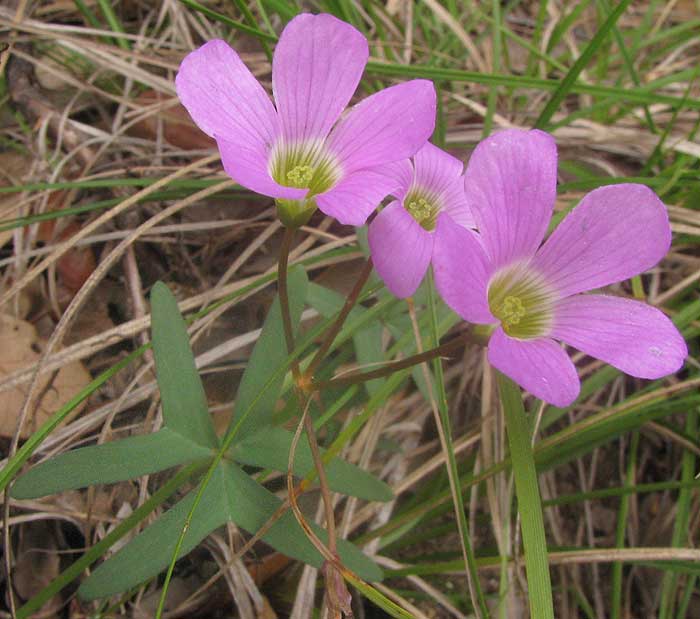Excerpts from Jim Conrad's
Naturalist Newsletter

from the November 3, 2013 Newsletter issued from the Frio Canyon Nature Education Center in the valley of the Dry Frio River in northern Uvalde County, southwestern Texas, on the southern border of the Edwards Plateau; elevation ~1750m (~5750 ft); N29.62°, W99.86°; USA
DRUMMOND'S OXALIS
Because of the aridness, wildflowers here tend to be less fleshy and delicate looking than many species back East. Therefore, when I spotted some especially tender looking, violet-colored flowers down in the grass, sheltered by a log lying next to it, I was tickled, and I took special satisfaction in parting the coarse grass blades to reveal the delicate little plant shown above.
A side view of the ¾-inch (20mm) flower appears below:

Wildflower enthusiasts and gardeners will recognize this as an oxalis, especially because a couple of popular oxalis species produce large, violet blossoms like these. In the first picture, notice that the flowers arise on slender stems, or pedicels, from among a tuft of large, trifoliate, clover-like leaves. This oxalis's leaflets are much more deeply notched than those on the better known species.
This is the Drummond's Oxalis or Drummond's Woodsorrel, OXALIS DRUMMONDII, found mostly in arid northern Mexico but extending into the US from southern Arizona and New Mexico to central Texas, where it favors sand or limestone soils of woodlands and prairies.
As with other oxalises, the Drummond's Oxalis's leaves are rich in vitamin C, and very sour to the taste, containing oxalic acid, thus making good nibblings or salad additions. However, the species grows alone or in small colonies, so it'd be a shame to eat them if you don't have to.
Drumond's Oxalis arises from a bulb. It's a good species to plant in arid-land short-grass/ wildflower-mix gardens.